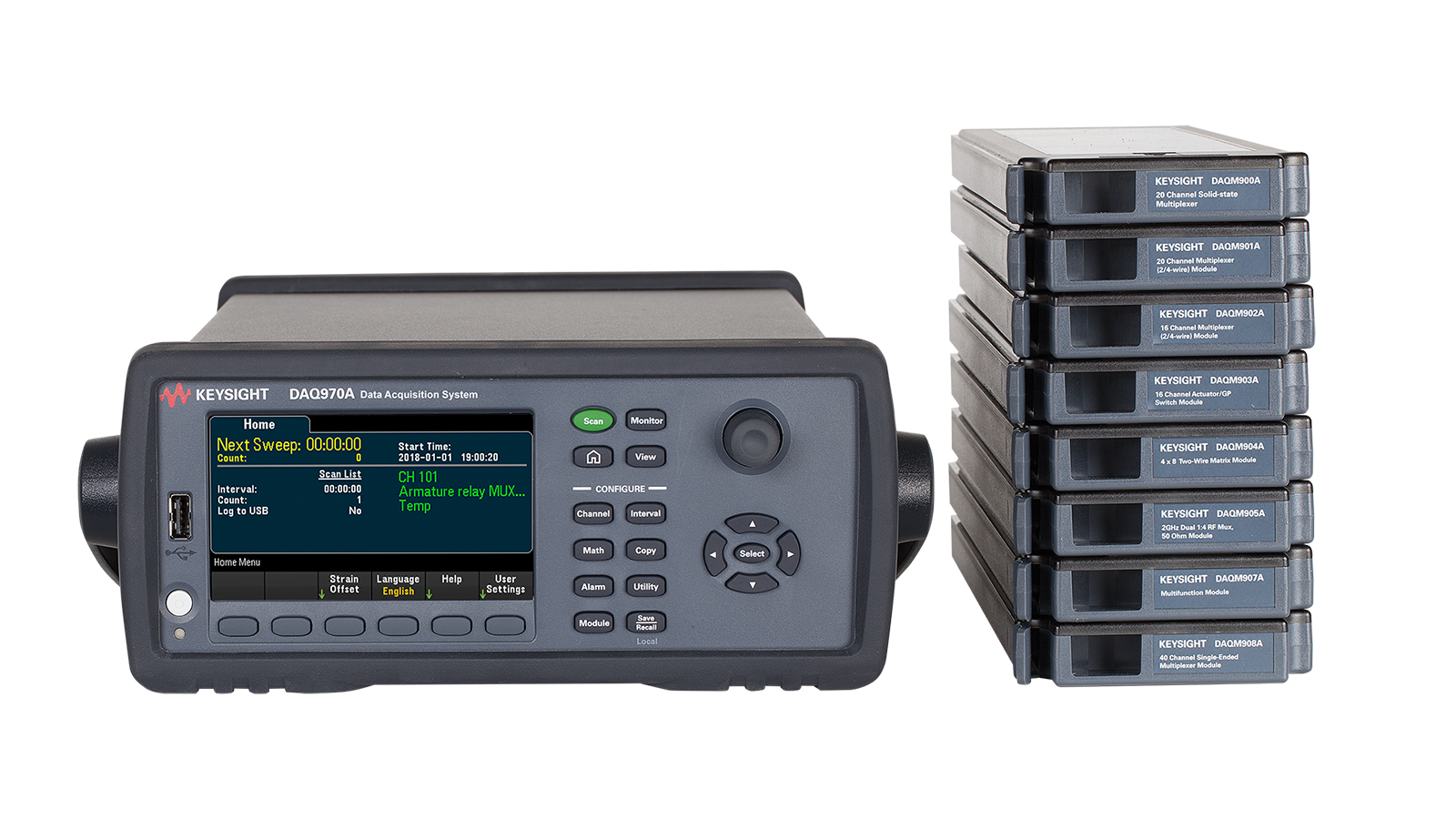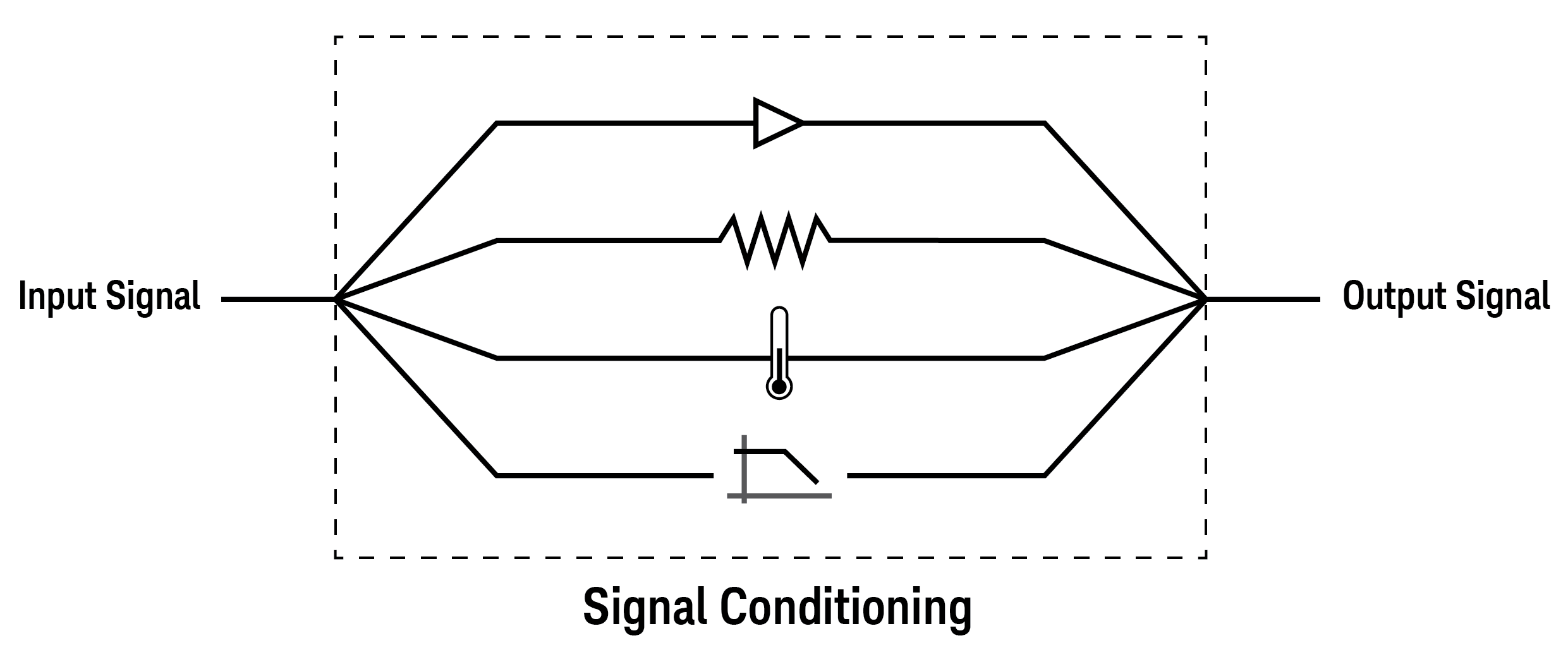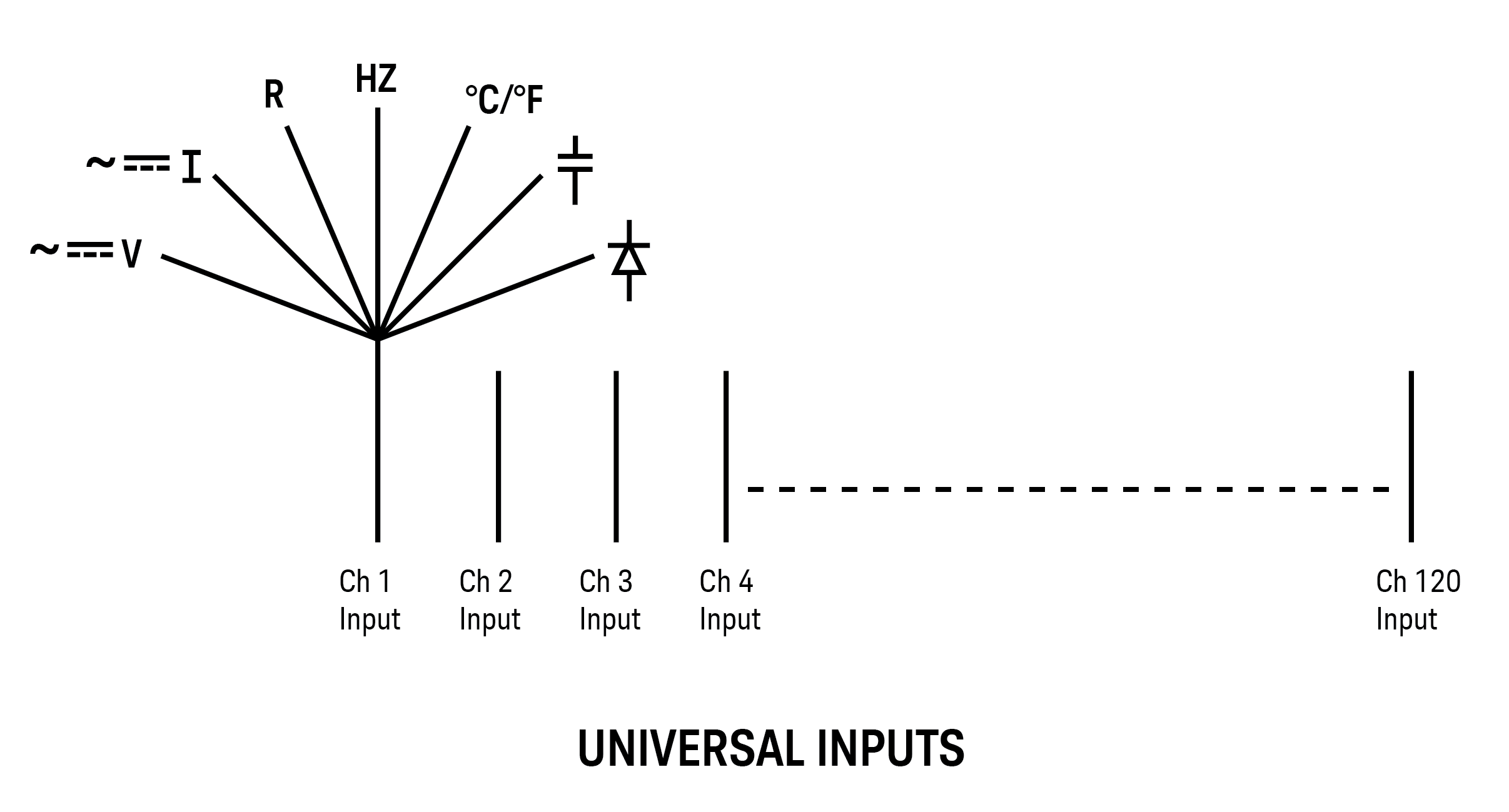
Making Multiple Type Signal Measurements with your DAQ unit
What does it mean by multiple type signal measurements in the data acquisition (DAQ) system world? It means that you can measure various electrical signals such as voltage, current, resistance, voltage frequency/period and physical-to-electrical transducer signals for measuring temperature, humidity, pressure, strain and more.
There are many DAQ solutions in the market, but they are mostly designed for specific mechanical characteristic measurements using transducers to measure strain, pressure, vibration and so on. There are DAQ solutions that focus only on temperature measurements and are called temperature data loggers. The Keysight DAQ970A data acquisition system (Figure 1) has built-in 6 ½ digits digital multimeter (DMM) and signal conditioning circuitry that is extremely versatile and can measure multiple type signals without the complex setups.

Built-in DMM and signal conditioning in DAQ systems
Why should you care about having built-in DMM and signal conditioning in a DAQ system? The benefits of having built-in DMM and signal conditioning in a DAQ system are:
- Saving space and cost.
You do not need to purchase a DMM card or a specific type of signal conditioning card to make the measurements. If you have a mainframe that has three open slots, you will want to maximize all the slots for the purpose of input measurement interface. - Reducing the complexity of setup configuration.
Having to add an additional signal conditioning card, like an amplifier, requires extra configuration to synchronize your testing with input measurement interface, extra external DC power biasing required, and more. - Optimizing speed and accuracy.
DAQ designers and manufacturers must optimize the scanning speed and measurement accuracy. Not only with built-in hardware but also built-in software to perform signal linearization, error correction, and transaction optimization.
Multiple type signal measurements with built-in DMM and signal conditioning in DAQ systems
Signal conditioning is used to amplify, attenuate, shape, or isolate signals from transducers before they are sent to the measurement hardware. Signal conditioning converts the signal to a form that is measurable. Examples of signal conditioning include:
- Amplification of small signals
- Attenuation of large signals
- Thermocouple compensation for temperature measurements
- Filtering to remove system noise
In some data acquisition systems, the signal conditioning components are incorporated internally within the system. These systems can measure multiple type signals such as ac/dc-voltage, resistance, frequency, ac/dc-current, and temperature on the input channel without the need for external signal-conditioning components.

Figure 2. A simplified block diagram of a signal conditioning box or circuitry (amplify, attenuate, temperature linearization, filtering)
What is a Universal Input DAQ channel?
DAQ systems with built-in DMM and signal conditioning have the advantage of measuring multiple type signals as mentioned above. By adding multiplexer switching interface modules, this means you will have multi-channel or Universal Inputs. Universal Inputs means all the input channels of your interface modules can measure multiple type signals.

Figure 3. Simplified diagram of the measurement capabilities of each Universal Input channel
How can you benefit from using Universal Input channels?
For example, your test application requires you to measure ten thermocouple temperature points and another ten voltage points with a range of 0-20 V. Without having Universal Inputs, you will likely need to purchase two separate input cards, one to measure all ten temperature points and another to measure ten voltage points. This also means the two input cards will occupy two slots of your mainframe. Having a 20-channel Universal Input card will save you both cost and space.
Summary
A DAQ system with built-in 6 ½ digit DMM and signal conditioning is very ideal for multiple type signals measurements. It provides the flexibility of Universal Input for every single input channel and allows you to measure multiple type signals on all your input channels.
Keysight has just introduced the next generation DAQ970A system. It has the ease of use and configurability many have accustomed to such as built-in 6 ½ digit DMM and signal conditioning (no external box required), capable of measuring multiple types of signals (temperature, voltage, current, resistance, diode, capacitance, frequency) and universal inputs allowing you to wire any signal to any channel.
The DAQ970A has enhancements over the legacy Keysight 34970A/34972A DAQ systems in:
- Ability to measure diode and capacitance (1nF – 100µF ranges)
- Ability to measure lower current ranges (1µA DC and 100µA AC) and higher resistance range (1000 MΩ)
- Capability to scan at rates of up to 450 channels/sec with new solid-state multiplexer module and reading speed per channel of up to 5000 readings/sec to memory and I/O interface
If you have any feedback or questions, please don’t hesitate to reply to my blog.
For more information about the Keysight’s DAQ970A system, please go to www.keysight.com/find/daq970a